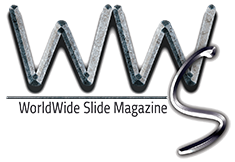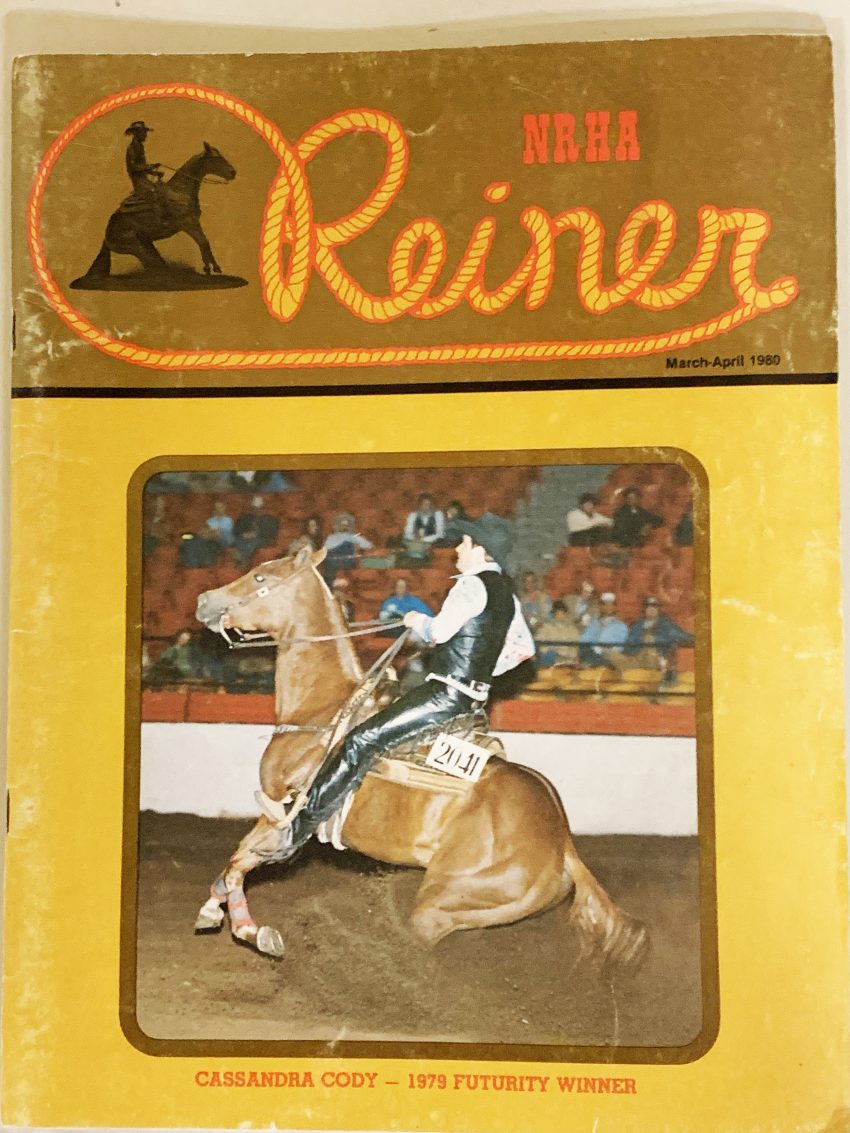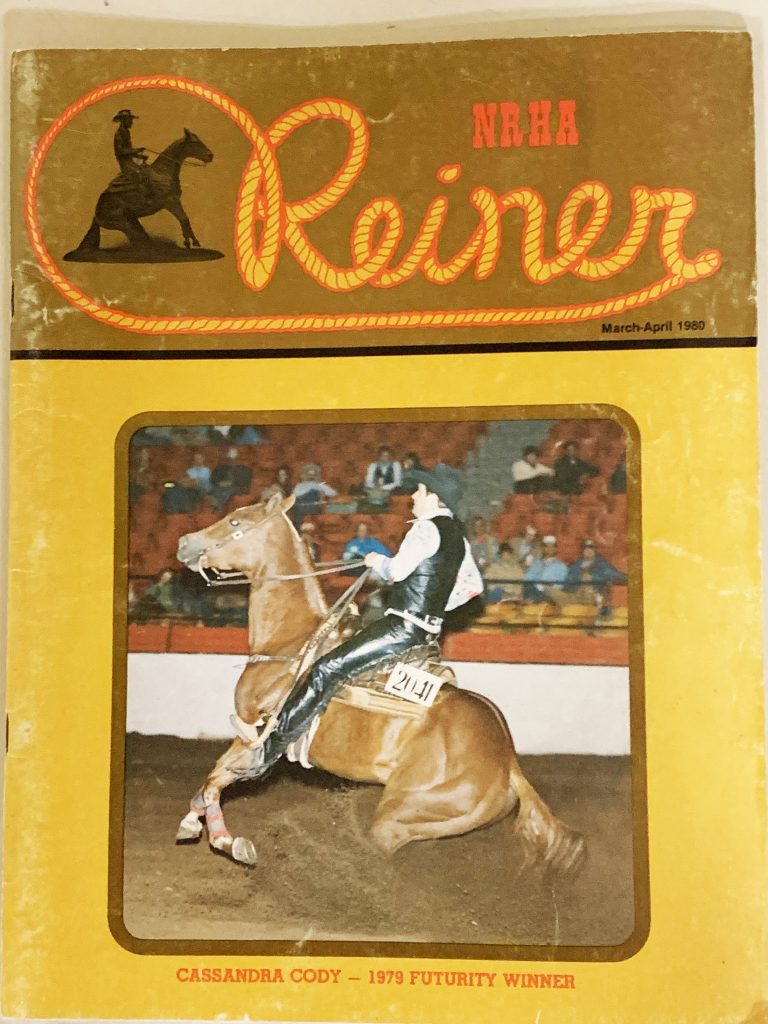
Much like the National Reining Horse Association family came to be, as far as trainers and owners, the Association’s implementation team was formed both by happenstance and design.
That was the case with the beginning of the Reiner magazine. After self-publishing a newsletter, the Board and management of NRHA decided to pursue having its own magazine. Post Printing in Minster, Ohio, did printing for the Ohio Quarter Horse Association, and also printed a publication for Charolais and Guernsey cattle. Its owner Glenn Thompson, and manager Frank Kuenning were familiar to many in the horse industry
So the NRHA contacted Kuenning about printing the magazine in late 1978. They explained that they also needed someone to put the magazine together and asked if he knew anyone who might take that job.
As it turned out, he did. Sharon Barr had worked for Post for 10 years, but had just had her second son and wanted to spend time at home. She had managed the printing for the OQHA’s publication and one for the Angus association, plus the huge All American Quarter Horse Congress program.
When Kuenning approached Sharon, she was receptive to the idea of working from home, so Frank took her to Columbus in December to meet with some people. Barr said, “We met with Kaye Potts, Paul Horn, Bill Horn, Bob Loomis, Larry Rose, Steve Williams and NRHA President Bill Kuhl. They said they wanted to have a magazine.”
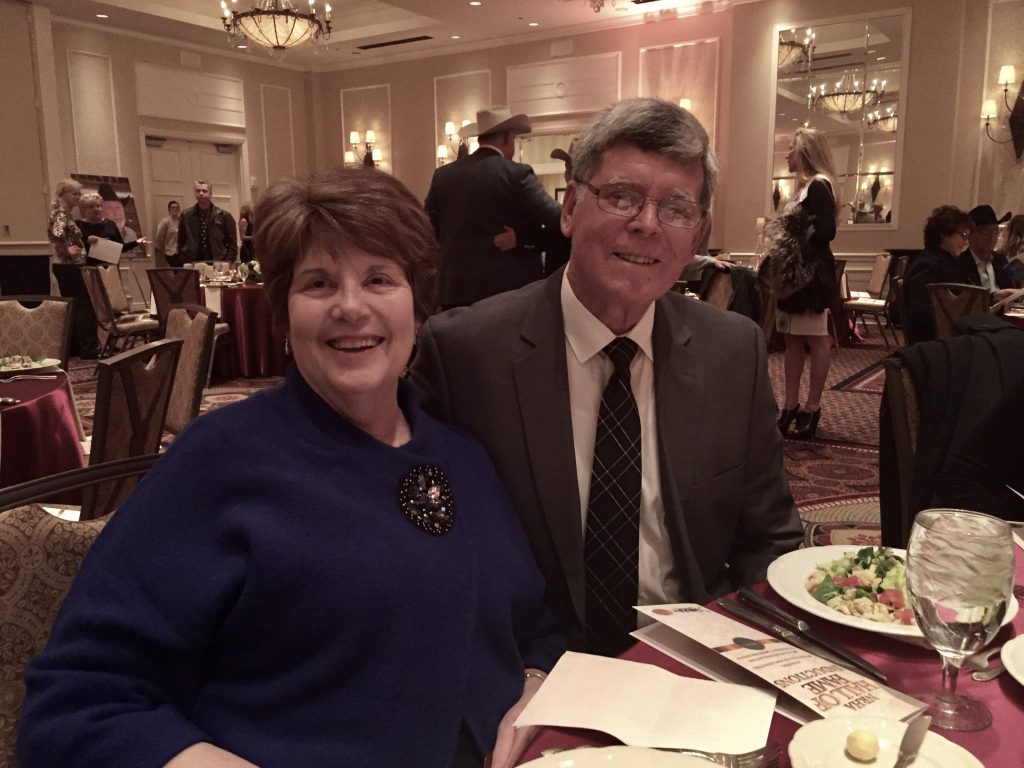
The NRHA office was still housed in Kay Potts’ home and the association had less than a thousand members. Sharon saw the NRHA’s four-page newsletter and asked if they really had enough news to fill a magazine every other month. The reiners quickly responded that there was plenty of news. Then, Larry Rose showed her the Cuttin’ Hoss Chatter, a beautiful, book-bound color magazine, and said, “Someday, we’d like to have something like this!”
That seemed farfetched, so Barr then asked if they had someone to write the magazine. She explained, “They said Charlie Hutton had written a health article, and then they told me about Pat Feuerstein, who had horses with Paul and did a newsletter for the East Coast Reining Horse Association. They told me she’d get the information to me.”
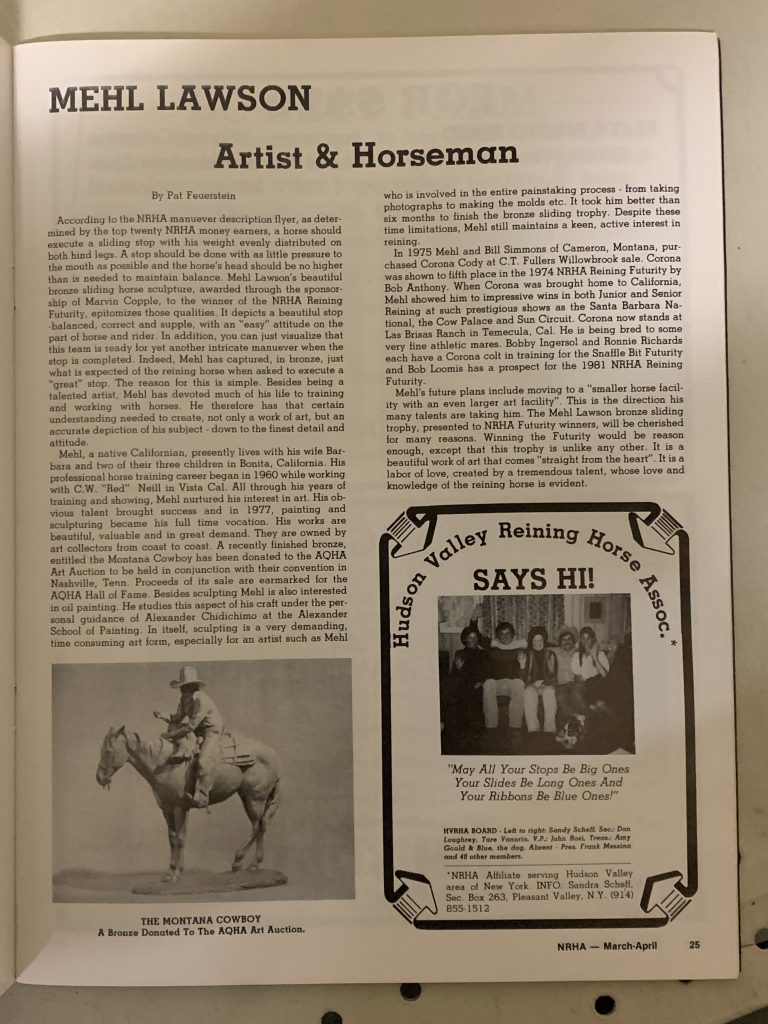
Salary was discussed and it was decided that the association could afford $150 per month. Sharon remembered there was a bit of a sticky point when Paul Horn asked if, since they were only doing six issues a year, they should pay her by the issue instead of the month.
She remembered having some early doubts. She told her husband, Ray, “I don’t think I can do this,” and he told her she had to because the reiners had nobody else! Somehow it all came together, and the first Reiner was published March-April, 1980.
Sharon recounted, “We made the first one and people liked it so it grew from there.” Bob Loomis was on that first cover of the Reiner magazine and 1,000 copies were printed. Association business took up quite a few pages, and Pat Feuerstein, who lived on Long Island, wrote most of the articles from her home. The relationship with Feuerstein was one that Barr would come to cherish, and the two would become lifelong friends, communicating by phone from their respective homes.
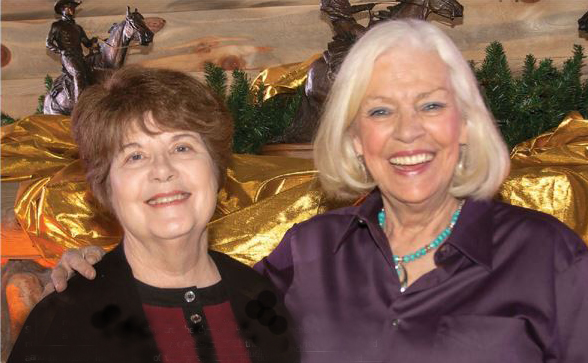
Now an NRHA Hall of Fame member, Feuerstein was a Non Pro reiner. She was also a natural story teller whose mission evolved into being the unofficial historian of the association. For Sharon, Pat was the source of her information about the people and events of the sport she would come to understand and love.
Remote workers were not the norm in those days. Sharon remembered, “We were all working from home when no one was. We were ahead of our time.”
She continued, “I was just so proud of that first magazine, but now when I see one of the early issues, I cringe. Production is so much better now with computer graphic design!”
She continued to rise to the challenge of a growing entity and handled a variety of tasks. “I had to sell advertising, and for some folks we had to create the ads!”
Sharon grew to know and appreciate the people she dealt with. She’d talk to them every month, learn about their lives and their kids, and they ultimately became her reining family. For the 38 years that she worked for NRHA’s publication, hers was a familiar voice to most reiners. She said, “I think I was the only person who was not a horse person in the beginning so the fact that I lasted past a year was amazing. I just knew the printing end of it at first, but after a while I knew the people.”
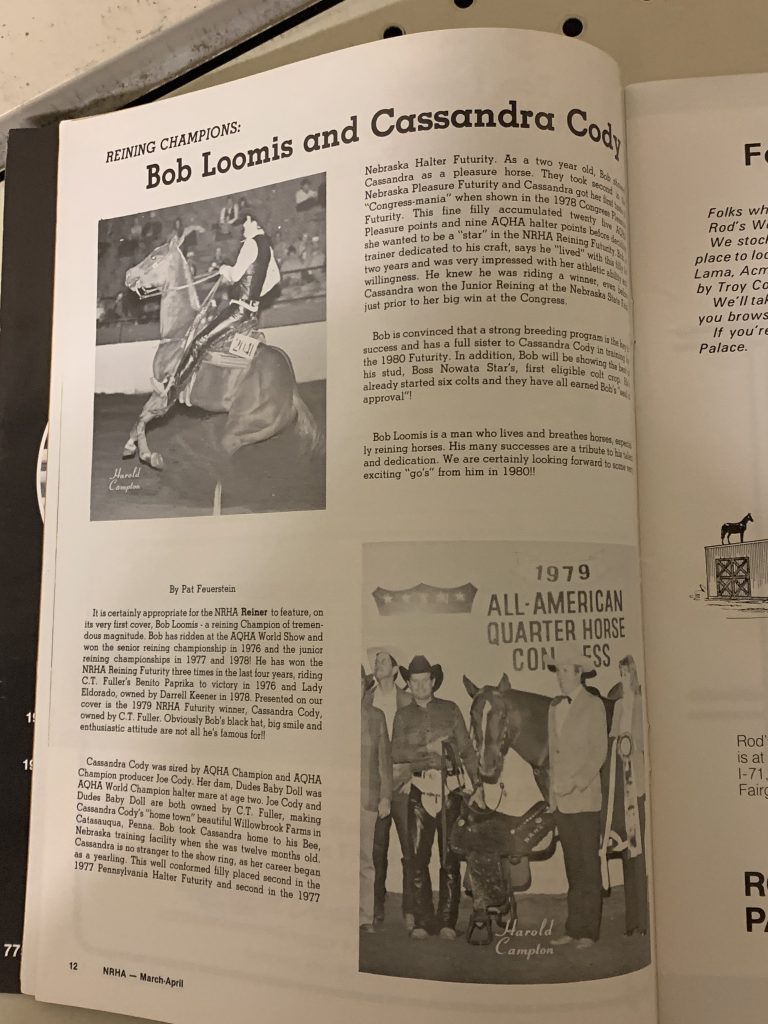
And the Reiner grew. After a time, in the mid-eighties, because the number of NRHA approved shows was growing rapidly, the association needed a quicker way to get information to the members. Thus, the NRHA Reiner Supplement was born. NRHA Board Member John Snobelen referred to it as REINER LITE – and that became the office’s name for the publication. It was a small black and white, self-cover publication that was usually 32 pages. It contained official NRHA info and some features, but primarily it was used to keep the membership informed of upcoming events, program deadlines and official communications the membership needed. Sharon recalled, “This was before the day of any active NRHA website, I believe. I think we kept that schedule: 6 full-color Reiner issues and 6 b/w Supplements for 2 to 3 years before beginning the 12 monthly issues of the full Reiner.”
Along with the monthly issues, the Futurity show program was a tremendous project. One year the program was almost 500 pages.
In those pre-computer days, the process of getting a publication to print was much different than it is now and much more involved. Copy for the magazine was typed on a typewriter and the printed pages were sent to Post Printing. At Post Printing, the copy was typeset onto photographic paper. That was waxed on one side to make it adhesive, then cut into columns to be pasted onto the layout sheets. Negatives were shot of the layout sheets then plates were made with which to print. That was all just for a black and white page.
Sharon laughed and said, “In the beginning, we were black and white only, then we would sometimes have one other color on a page. I remember the first four-color ad we ever got. Sally Brown sent it in, and it was an ad for Hollywood Jac. It came as film – and they all were amazed at Post Printing. They felt that someone had really invested a lot of money in that ad!”
Before long color ads became more common. Sharon remembered, “When Cam Essick started doing all those ads, she worked with Wilma Simon, the graphic artist at Post Printing and, before long, Cam was buying most of the front pages of the magazine for her clients!” Interestingly, Wilma designed the second Reiner masthead about the time everything became digital. The initial cover artwork with the rope spelling REINER and the trophy in the loop had been created by a local art teacher and friend of Sharon’s, Terri Bey. Both were done for free!
Since Post Printing also printed the NRHA Futurity Program, Sharon and her husband, Ray, an ag teacher at Minster for 37 years, took over the task of getting it to Oklahoma when the Futurity moved west.
The draws had to be included so there was no other way to get it to the show in time. “It didn’t get off the presses soon enough so Ray and I would drive it out. In the beginning, we would do the drive in one day, then got to where we would take two.”
When different contingencies arose, help was also to be found from the reining community. She remembered, “Mike Flarida took some in his horse trailer and Sam Smith did, too. They really helped out in different years.”
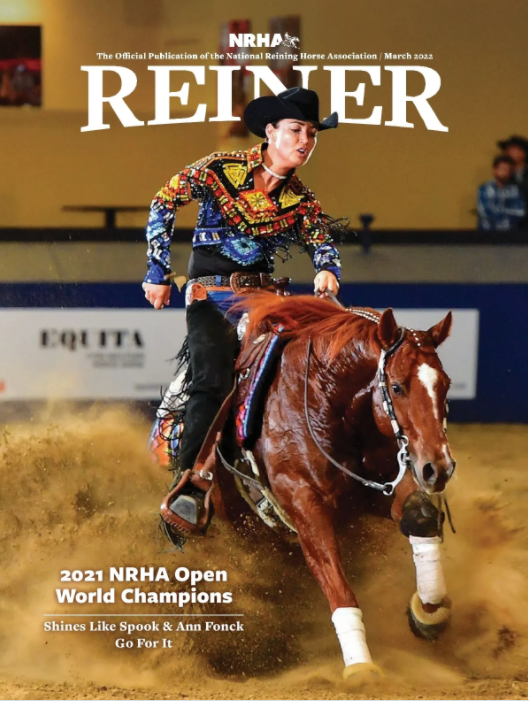
The Barr’s holiday schedule changed because of this. She said, “We never had Thanksgiving at home.” She was glad their sons had girlfriends to have Thanksgiving dinners with.
After the magazines were delivered, Sharon would stay the week to meet with advertisers and prepare for the next issue. She explained, “Sometimes we’d work in the NRHA office then later when there was a media room at the fairgrounds, we would work there. For me, it was an opportunity to get to know the staff that I worked with long-distance, and to be up close and personal to the event I was learning so much about.”
She had an ally in getting to know people. She’d meet up with Pat Feuerstein at the show. “Pat knew everyone and introduced me to so many people.” Most did not recognize Sharon when they met her, until she spoke. Then they knew immediately who she was from hearing her soothing voice on the phone for so many years when they called on Reiner business. She somehow never seemed to be putting too much pressure on people when she’d call to remind them of a deadline or ask for an ad because she was also sincerely interested in their horses and their kids.
As the magazine grew, it provided multiple functions that the growing association needed. It provided the information that the member needed through show listings, news, results and standings
Of course, in the modern digital age, there are so many ways to keep in touch. Facebook, YouTube, web pages, even text and Twitter. But Barr notes that, during the NRHA’s formative years, the Reiner was the key.
Sharon said, “Before all this technology took over, there really wasn’t that much information available. People hungered for the articles in the Reiner, like the Trainer Talk pieces. I think it played an essential role in the sport’s growth. It also showcased the people of the industry year-round besides just the Futurity and Derby winners and provided the recognition upon which any association depends.”
Every milestone in the growth of the Reiner magazine felt like a personal achievement; but Sharon says the highlight of her career was being awarded the Dale Wilkinson Lifetime Achievement Award in 2016. Even then, it wasn’t all about the award for her. She said, “Working for the Reiner wasn’t just a lifelong job, it was the job of a lifetime.”
SIDEBAR
Remembering Carol Trimmer
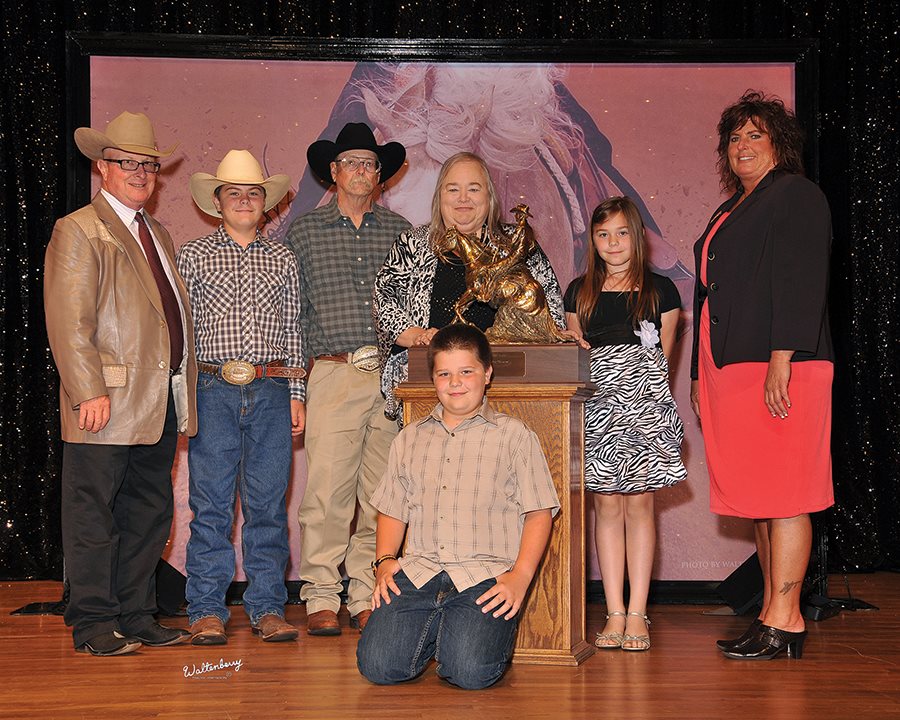
The Reiner was already on its way when Carol Trimmer, from Ohio, went to work for the NRHA. She was a horsewoman whose asthma prevented her from spending time in the barn, but she still wanted to be involved with horses. Carol took a part-time job as office clerk while still working for Colgate-Palmolive, thinking it was a way to remain involved in the horse world.
She understood the horse business and took over reorganizing the files after a previous employee had filed all the horse records by their last names. Carol knew that Topsail Cody should not be filed under “C”.
When the NRHA office relocated to Oklahoma, Carol managed the NRHA Sire & Dam Program, and said that one reason she moved west was to make sure NRHA’s history was preserved. She also became active with the NRHA Hall of Fame, becoming the Hall of Fame Committee liaison.
Carol always wanted to proof the magazine to ensure that it was as accurate as possible and later Sharon Barr enthusiastically endorsed her for the editor’s position when it became available. “We had others edit the Reiner but they didn’t last long. I said they should give it to Carol because we already knew she was reliable, she knew the business and the people . . . and most importantly, she wanted to do it!”
Carol, an NRHA Hall of Fame inductee, is most remembered for her contribution to the NRHA as editor of the Reiner, and subsequently as the NRHA’s Sr. Director of Publications. Her tenure with the magazine began with an eye for facts, typos and misspellings. But that, combined with her true passion for the reining industry, made her live forever in the hearts of the reiners she knew and worked with.
Sharon said, “When I remember Carol, the first thing I think of is her quiet soothing manner and that genuine laugh. She loved NRHA, her work and the people and was admired and loved by everyone. She was always fair, always pleasant.”
